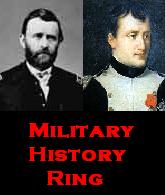Book Review of The Business of War: Military Enterprise and Military Revolution in Early Modern Europe
Posted by William Young on August 31, 2012
David Parrott. The Business of War: Military Enterprise and Military Revolution in Early Modern Europe. Cambridge: Cambridge University Press, 2012. ISBN 978-0-521-51483-5. Figures. Maps. Notes. Bibliography. Index. Pp. xvii, 429. $80.00.
Originally posted in International History (28 August 2012)
Dr David Parrott, a Fellow and Lecturer at New College, University of Oxford, provides a revisionist study concerning private contractors or military enterprisers and their role in early modern warfare. He is known for articles on the Thirty Years War (1618-1648), the Military Revolution in Early Modern Europe, and his outstanding study Richelieu’s Army: War, Government and Society in France, 1624-1642 (2001).
Early modern historians have traditionally stressed the transition from rulers and warlords relying on military contractors and mercenaries in the fifteenth century to the establishment of state-recruited and state-administered standing armies in the late seventeenth and eighteenth centuries. This has been seen as part of the Military Revolution in early modern Europe. Parrott, however, challenges this accepted viewpoint. He shows through meticulous research that rulers and warlords in western Europe continuously relied on military enterprisers (private contractors that organized and waged warfare) throughout the early modern era. Military enterprisers played a major role in the recruitment, organization, and deployment of military forces. Rulers and warlords, however, kept control of the military might to meet their ultimate aims and objectives.
Parrott breaks down this analytical study into two parts. In the first part, the author examines the foundations and expansion of military enterprise. He begins by looking at military resources for hire, including the Italian condottieri, Swiss infantry, as well as German Landsknechte and Reiters from 1450 to the end of the Habsburg-Valois Wars (1559). The author then focuses on military contracting in the galley squadrons of the Mediterranean, the French Wars of Religion (1562-1598), Dutch Revolt (1568-1609), and the Long Turkish War (1593-1606), before concentrating on the Thirty Years War. This long-lasting conflict, fought by numerous belligerents, over a large geographic area focused mainly on Germany, was the proving ground for the further development of military enterprise. Parrott discusses the military enterprising of Bernhard von Saxe-Weimar, Albrecht von Wallenstein, and others. The author clearly shows that there was no single model for the organization of military might. He proves that there was no inevitable development towards a state-run, state-controlled army during the Thirty Years War. States, by themselves, lacked the financial resources and organization to create a large army and sustain it in the field.
In the second part of this study, Parrott explores the operations of military contractors at war. He shows, contrary to what many historians believe, that contracted armies were experienced and effective in the field. They were the quality forces that were usually the focal point of one’s military capability. The author goes on to show the importance and effectiveness of private contractors that equipped and supplied armies and navies in the early modern era. Parrott professes that military enterprisers were usually highly motivated in wartime to receive rewards, including lands, titles, and money.
Parrott stresses the long-lasting influence of the military enterpriser. The author disagrees with Fritz Redlich’s German Military Enterpriser and His Work Force (1964-65) and stresses the importance military enterprise past the Thirty Years War to the Wars of Louis XIV and beyond. He calls for historians to examine more closely the role of military enterprisers in future studies. Parrott believes: “The devolution of military organization and control into the hands of private contractors was hugely more diverse, effective and adaptable as a means to organize and deploy military force than previous historical accounts have indicated. Far from being a marginal and transient phenomenon in the history of European warfare, it was a lasting and successful set of mechanisms which, in various relations with rulers and their authority, lay at the heart of war-waging for centuries” (p.308).
Dr William Young
University of North Dakota
Grand Forks, North Dakota















Mitch Williamson said
Reblogged this on War and Game and commented:
Another excellent book review by Dr. Young.